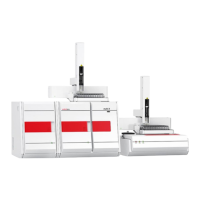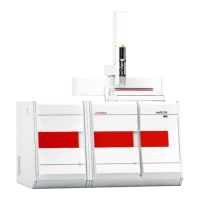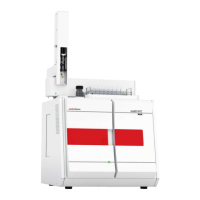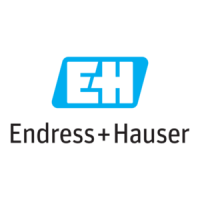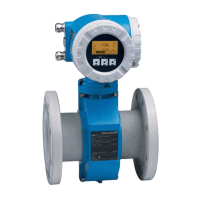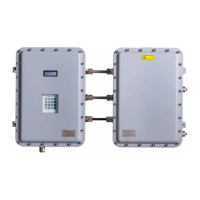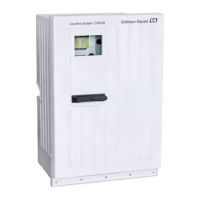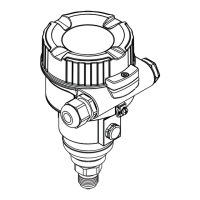Do you have a question about the Endress+Hauser analytikjena SPECORD PLUS and is the answer not in the manual?
Provides information on the design, function, and safe handling of the SPECORD PLUS.
Intended for qualified users with knowledge of UV/VIS analysis and specific software.
Explains symbols, signal words, and formatting conventions used in the manual.
Details the SPECORD PLUS series spectrophotometers and their spectral resolutions.
States compliance with pharmacopoeia regulations and suitability for routine labs.
Describes warning and mandatory action labels and their meanings.
Covers personnel requirements, explosion protection, and general operation safety.
Details electrical safety, sample/reagent handling, and emergency behavior.
Outlines safety precautions for maintenance, repair, and emergencies.
Describes front connections and status lights.
Details connections on the right side, lamp housing, and type plate.
Lists and describes the main modules of the SPECORD PLUS system.
Illustrates the general optical design for SPECORD 200/210/250 PLUS models.
Illustrates the general optical design for the SPECORD 50 PLUS model.
Describes the variable sample chamber design, beam paths, and connections.
Shows sample chamber layouts and provides dimensional data for different models.
Provides specific dimensional data for sample chambers of different models.
Details climate, laboratory, and location requirements for installation.
Warns about electric shock and specifies operating voltage, frequency, and fuses.
Specifies dimensions and clearance needed for the device and accessories.
Provides step-by-step instructions for installing the device.
Explains how to remove and re-fasten transport locks.
Describes how to check and correct device adjustment using software.
Details the procedure for performing basic and grating correction.
Guides on powering the device on and off, including warm-up periods.
Explains manual control of UV and VIS lamps for service life extension.
Outlines the initial steps for performing a measurement using the SPECORD PLUS.
Lists steps for preparing the device and software for measurement.
Details the steps for performing a reference and sample measurement.
Describes the standard cell holders included with the device.
Explains how to mount cell holders and insert cells correctly.
Describes the specific locations for measuring opaque samples.
Mentions a range of other accessories available for various applications.
Provides instructions for cleaning the device, including precautions for infectious samples.
Details safety precautions and steps for replacing lamps and desiccant cartridges.
Provides specific instructions for replacing the UV and VIS lamps.
Details the procedure for replacing the VIS lamp.
Guides on inserting or replacing the desiccant cartridge.
Guides on how to replace defective fuses in the device.
Outlines safe procedures for moving the device within a lab environment.
Advises on avoiding impact, vibration, and temperature fluctuations during transport.
Specifies conditions for storing the device to prevent damage from moisture and environment.
Details the optical system components and performance characteristics.
Lists optical and photometric specifications for the SPECORD 50 PLUS model.
Lists optical and photometric specifications for the SPECORD 200 PLUS model.
Lists optical and photometric specifications for the SPECORD 210 PLUS model.
Lists optical and photometric specifications for the SPECORD 250 PLUS model.
Provides mass, dimensions, mains voltage, frequency, and power consumption.
Lists operating temperatures, humidity, and energy usage in different states.
Covers protection class, safety standards, EMC compatibility, and environmental testing.
Mentions compliance with EU directives and specific guidelines for China.
Provides information on the design, function, and safe handling of the SPECORD PLUS.
Intended for qualified users with knowledge of UV/VIS analysis and specific software.
Explains symbols, signal words, and formatting conventions used in the manual.
Details the SPECORD PLUS series spectrophotometers and their spectral resolutions.
States compliance with pharmacopoeia regulations and suitability for routine labs.
Describes warning and mandatory action labels and their meanings.
Covers personnel requirements, explosion protection, and general operation safety.
Details electrical safety, sample/reagent handling, and emergency behavior.
Outlines safety precautions for maintenance, repair, and emergencies.
Describes front connections and status lights.
Details connections on the right side, lamp housing, and type plate.
Lists and describes the main modules of the SPECORD PLUS system.
Illustrates the general optical design for SPECORD 200/210/250 PLUS models.
Illustrates the general optical design for the SPECORD 50 PLUS model.
Describes the variable sample chamber design, beam paths, and connections.
Shows sample chamber layouts and provides dimensional data for different models.
Provides specific dimensional data for sample chambers of different models.
Details climate, laboratory, and location requirements for installation.
Warns about electric shock and specifies operating voltage, frequency, and fuses.
Specifies dimensions and clearance needed for the device and accessories.
Provides step-by-step instructions for installing the device.
Explains how to remove and re-fasten transport locks.
Describes how to check and correct device adjustment using software.
Details the procedure for performing basic and grating correction.
Guides on powering the device on and off, including warm-up periods.
Explains manual control of UV and VIS lamps for service life extension.
Outlines the initial steps for performing a measurement using the SPECORD PLUS.
Lists steps for preparing the device and software for measurement.
Details the steps for performing a reference and sample measurement.
Describes the standard cell holders included with the device.
Explains how to mount cell holders and insert cells correctly.
Describes the specific locations for measuring opaque samples.
Mentions a range of other accessories available for various applications.
Provides instructions for cleaning the device, including precautions for infectious samples.
Details safety precautions and steps for replacing lamps and desiccant cartridges.
Provides specific instructions for replacing the UV and VIS lamps.
Details the procedure for replacing the VIS lamp.
Guides on inserting or replacing the desiccant cartridge.
Guides on how to replace defective fuses in the device.
Outlines safe procedures for moving the device within a lab environment.
Advises on avoiding impact, vibration, and temperature fluctuations during transport.
Specifies conditions for storing the device to prevent damage from moisture and environment.
Details the optical system components and performance characteristics.
Lists optical and photometric specifications for the SPECORD 50 PLUS model.
Lists optical and photometric specifications for the SPECORD 200 PLUS model.
Lists optical and photometric specifications for the SPECORD 210 PLUS model.
Lists optical and photometric specifications for the SPECORD 250 PLUS model.
Provides mass, dimensions, mains voltage, frequency, and power consumption.
Lists operating temperatures, humidity, and energy usage in different states.
Covers protection class, safety standards, EMC compatibility, and environmental testing.
Mentions compliance with EU directives and specific guidelines for China.
| Optical System | Double beam |
|---|---|
| Wavelength Range | 190 - 1100 nm |
| Wavelength Reproducibility | ≤0.1 nm |
| Power Supply | 100-240 V, 50/60 Hz |
| Device Type | UV/Vis Spectrophotometer |
| Light Source | Deuterium and Tungsten Halogen Lamp |
| Wavelength Accuracy | ±0.3 nm |
| Photometric Reproducibility | ±0.001 Abs (0 - 0.5 Abs), ±0.002 Abs (0.5 - 1.0 Abs), ±0.15% T (0 - 100% T) |
| Baseline Flatness | ±0.001 A |
| Data Interval | 0.1, 0.2, 0.5, 1, 2, 5 nm |
| Interface | USB, Ethernet |
| Detector | Silicon Photodiode |
